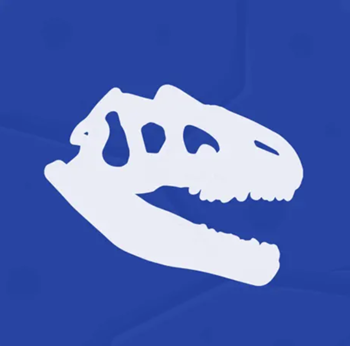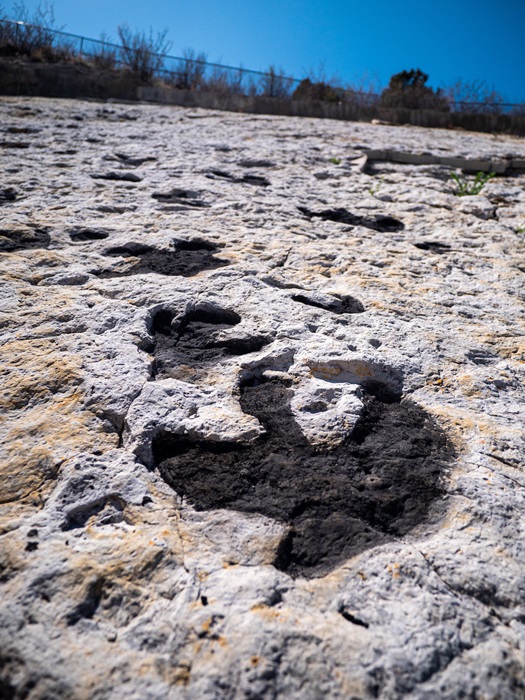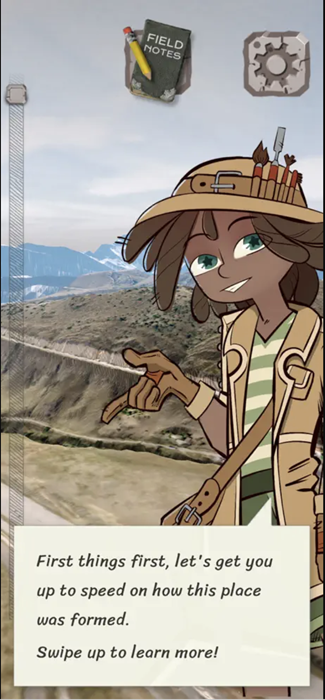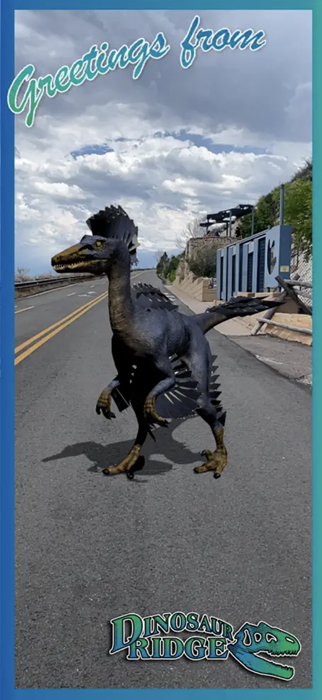Visual Arts Faculty and Students Create New App That Makes Paleontology More Accessible
Students in Carrie Osgood’s Design Studio III class pitched an app idea to Dinosaur Ridge, a nationally significant fossil site just west of Denver, that came online this summer after months of effort.
Megan Briggs Pintel | College of Arts & Media Oct 11, 2022
A new app available on the Apple and Google Play stores came to fruition thanks to a faculty member, students, and an alum in the Visual Arts department at CU Denver. The app, built for Dinosaur Ridge and discoverable under that name, began as a design pitch project for digital design students and was completed this summer by Associate Professor Bryan Leister.
“The app is way more than we ever expected,” says Dana Rinderknecht, the director of development and membership at Dinosaur Ridge. Located just west of Denver, Dinosaur Ridge is an outdoor discovery center and is considered the number one dinosaur tracksite in North America due to its number and variety of tracks. Its location near a major metropolitan area makes it accessible to a large number of visitors—about 250,000 each year.
The Pitch That Became Reality
The app project originated in the spring 2021 Design Studio III class taught by Carrie Osgood. With the intention of gaining real-world experience working for a client, students in this class are called upon to solve a problem for a nonprofit organization. The problem CU Denver digital design students sought to solve for Dinosaur Ridge was making complex geology and paleontology not only accessible but also engaging for different groups of people, including children.
A group of four students, Bryan McDonald, Luis Hernandez, Satu Gillispie, and Heidi Perez, pitched their app idea to Dinosaur Ridge in March 2021, and the ball began rolling. Dinosaur Ridge was able to use the student’s proof of concept, which Rinderknecht says was “so cool”, and dinosaur animations purchased from a company specializing in virtual reality, to raise the funds they would use to hire Leister. Leister then hired two current students, April Kinney and Christina Weed, both studying 3D Graphics & Animation, to help with the animation needed for the augmented reality (AR) pieces. Toward the end of the project, Leister hired Gillispie (who graduated in May 2022 with a degree in digital design) to “make it a good user experience”. Leister says Kinney, Weed, and Gillispie all contributed ideas to make the app more game-like and keep user’s interest.
 App Design Required a Lot of Research
App Design Required a Lot of Research
Digital designers are often called upon to solve problems for organizations in a host of different industries. As a professional designer, Leister is used to working with clients as diverse as Der Spiegel to the Denver Art Museum. The Dinosaur Ridge project called upon him to learn about complex geological phenomena and translate that knowledge into an interactive app. Leister worked with Kermit Shields, a retired geologist and volunteer for Dinosaur Ridge, and Erin LaCount, resident education director, to understand what should be included in the app. He also did his own research to better understand what he had been contracted to convey.
While Colorado is now a relatively dry, mountainous area, at one point, during the age of dinosaurs, it was flat, submerged in water, and home to fertile, easily malleable soil that helped preserve the story of the creatures who called this area home. Thousands of years later, the evidence of these creatures can be seen on the side of rock walls—those flat layers that were pushed up skyward when tectonic plates collided and formed the Rocky Mountains. Users of the Dinosaur Ridge app can now learn, in greater detail, about the geological events that preserved the tracks and made them visible to us, as well as learn about the dinosaurs that created those tracks.

Using AR, Visitors can see how a dinosaur would have moved through the land they are currently standing on at Dinosaur Ridge. While looking at the tracks on site, they can hold up their phones and see AR versions of the dinosaurs moving through the tracks. They can also take notes and capture pictures in the app’s “Field Guide”. Users are guided through the app with the help of Dr. Ichno, a character designed and animated by the CU Denver students. The group is so pleased with the app that Dinosaur Ridge is even thinking of offering a stuffed version of Dr. Ichno in their gift store.

The goal of the app, according to Rinderknecht, is to provide an extra educational piece to visitors, children especially, in the form of an interactive visual. Rinderknecht says users of the app can even learn about dinosaurs away from the site; for example, you can have dinosaurs join you in your living room.

Digital Design Students Gain Real-World Experience at CU Denver
Projects like the Dinosaur Ridge app give students at CU Denver real-world experience they can put in their portfolios and reference in job interviews. Leister says the class intentionally “gives them an experience working in a bunch of different industries…and starts to make them think about where they would like to work.”
For Gillispie, who is working toward game design as her full-time work, being able to work on the app with Leister represents a sort of completed circuit. “It was Bryan’s Intro to Digital Design course that got me into the Digital Design program, and I thank him for everything he taught me,” she says.